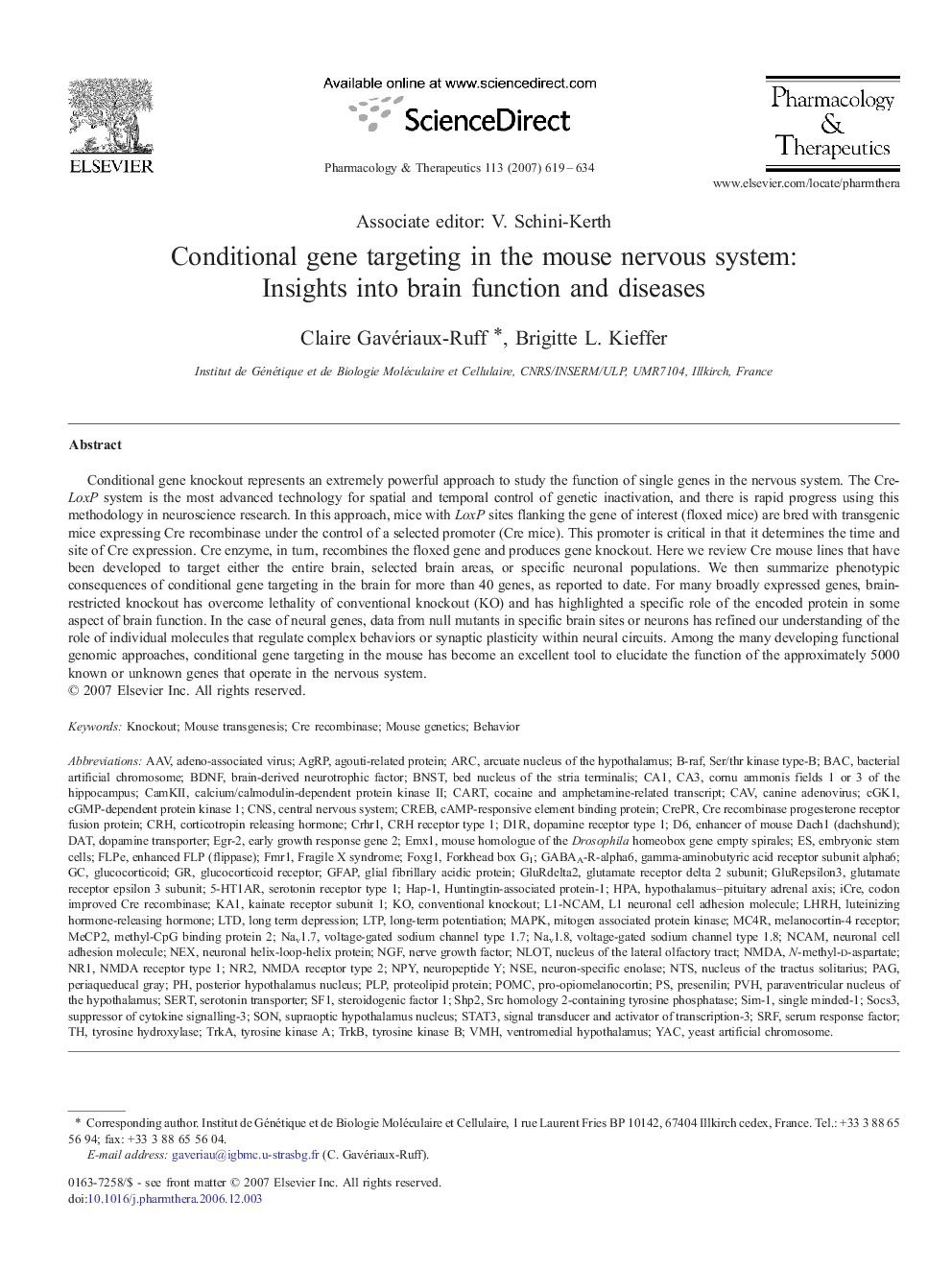| Article ID | Journal | Published Year | Pages | File Type |
|---|---|---|---|---|
| 2564203 | Pharmacology & Therapeutics | 2007 | 16 Pages |
Conditional gene knockout represents an extremely powerful approach to study the function of single genes in the nervous system. The Cre-LoxP system is the most advanced technology for spatial and temporal control of genetic inactivation, and there is rapid progress using this methodology in neuroscience research. In this approach, mice with LoxP sites flanking the gene of interest (floxed mice) are bred with transgenic mice expressing Cre recombinase under the control of a selected promoter (Cre mice). This promoter is critical in that it determines the time and site of Cre expression. Cre enzyme, in turn, recombines the floxed gene and produces gene knockout. Here we review Cre mouse lines that have been developed to target either the entire brain, selected brain areas, or specific neuronal populations. We then summarize phenotypic consequences of conditional gene targeting in the brain for more than 40 genes, as reported to date. For many broadly expressed genes, brain-restricted knockout has overcome lethality of conventional knockout (KO) and has highlighted a specific role of the encoded protein in some aspect of brain function. In the case of neural genes, data from null mutants in specific brain sites or neurons has refined our understanding of the role of individual molecules that regulate complex behaviors or synaptic plasticity within neural circuits. Among the many developing functional genomic approaches, conditional gene targeting in the mouse has become an excellent tool to elucidate the function of the approximately 5000 known or unknown genes that operate in the nervous system.
